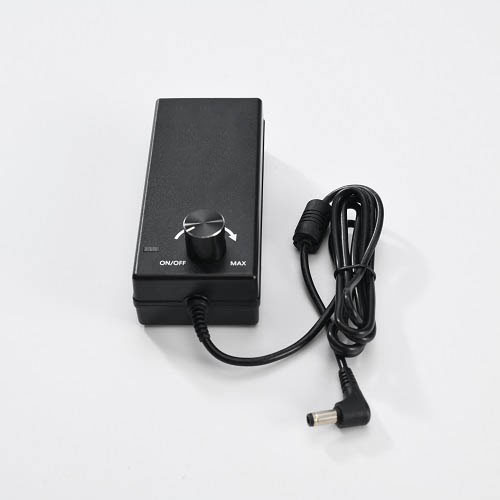To choose the right variable voltage adapter for your device, you need to consider the following aspects:

1. Device Requirements
Voltage and Current: Check the label of your device to figure out its required DC voltage and current. The output voltage range of the variable voltage adapter should cover the device's voltage requirement, and the output current should be greater than or equal to the device's maximum current demand. For example, if a device requires 9V and 0.5A, an adapter with an output voltage range that includes 9V and an output current of at least 0.5A can be selected.
Power: Calculate the power of the device using the formula $P = V \times I$. It is recommended to choose an adapter whose power is 20%-30% higher than the actual power of the device to ensure the device runs stably.
Polarity: Confirm the polarity of the device's power input, which is usually center - positive or center - negative. The adapter's output polarity must match that of the device; otherwise, it may damage the equipment.
2. Adapter Parameters
Input Voltage Range: Ensure that the input voltage range of the adapter is compatible with the local mains voltage. For example, an adapter with an input voltage range of 100 - 240V AC is suitable for global use, while a 110V - only or 220V - only adapter is suitable for specific regions.
Output Voltage Accuracy and Stability: The output voltage accuracy of the adapter indicates the error range of the output voltage relative to the set value. For precision equipment, an adapter with high - accuracy output voltage (such as ±1%) should be selected. Stability means that the adapter can maintain a stable output voltage even when the load or input voltage changes.
Ripple and Noise: Ripple and noise are the small fluctuations in the adapter's output voltage. For sensitive electronic devices, an adapter with low ripple and noise levels should be chosen to avoid affecting the device's performance.
3. Safety Features
Over - voltage, Over - current, and Over - temperature Protection: High - quality variable voltage adapters usually have protection functions such as over - voltage protection, over - current protection, and over - temperature protection. These functions can automatically cut off the power or issue an alarm when a fault occurs, protecting the safety of the device and the user.
Certification and Compliance: Ensure that the adapter meets relevant safety standards and certification requirements, such as CE, FCC, etc. This can guarantee the quality and safety of the adapter.
4. Type and Adjustment method
Linear or Switching Adapter: Linear adapters are suitable for small - power electronics with low - power requirements (≤30W) due to their low cost, simple design, and low output ripple. Switching adapters are more efficient, compact, and suitable for high - power or portable devices.
Adjustment Method: There are manual knob - type and digital - display - type adapters. The manual knob - type is simple and easy to use, while the digital - display - type can more accurately display the output voltage and current values, which is suitable for occasions that require precise adjustment.
5. Size and Weight
Portability: If you need to use the adapter in different locations or carry it with you, consider its size and weight. A small - sized and lightweight adapter is more suitable for portable devices and travel.
6. Brand and After - sales Service
Well - known Brands: Choose variable voltage adapters from well - known brands and manufacturers. Such brands usually have better product quality and after - sales service, which can provide a more reliable user experience.








